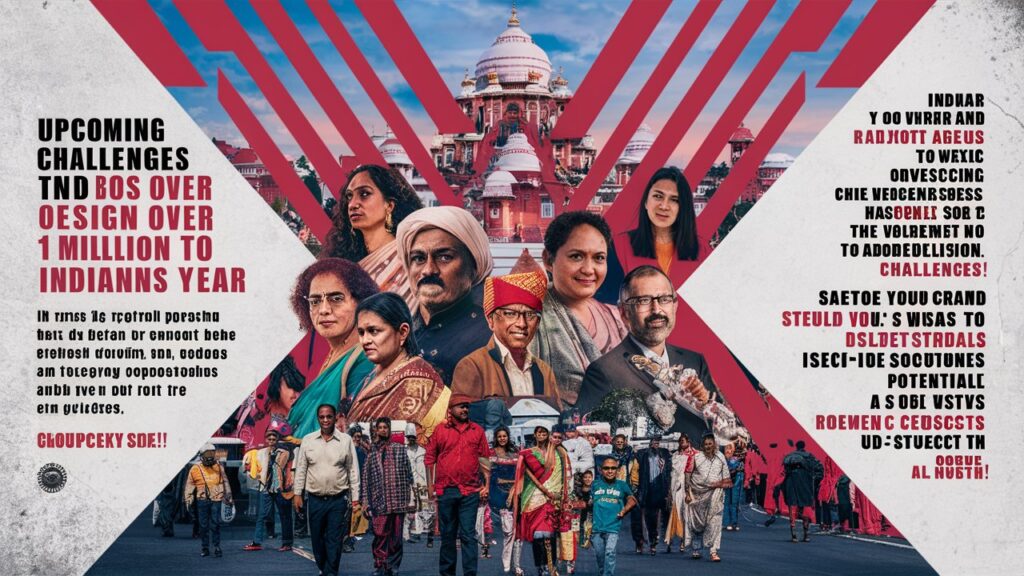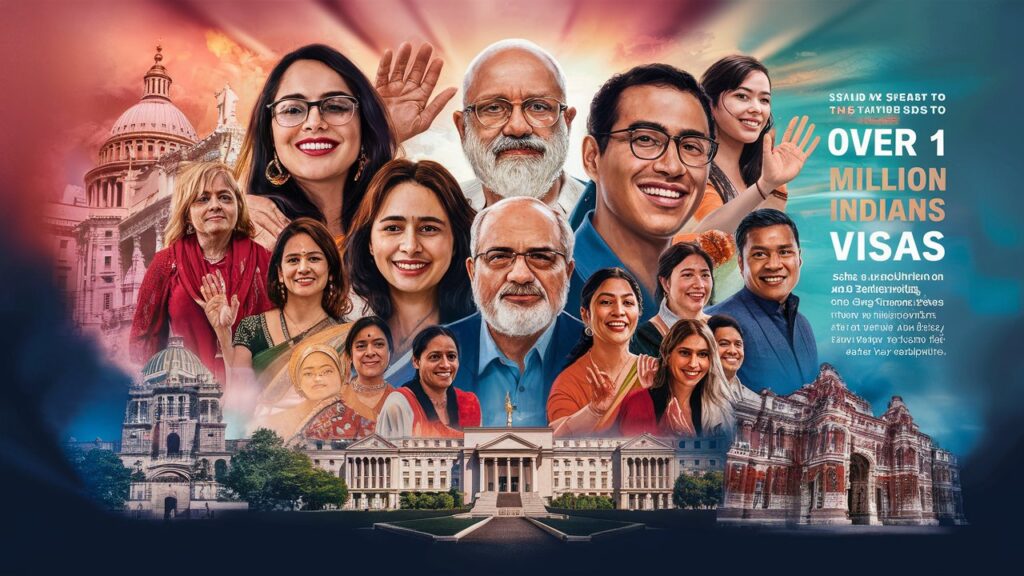In recent years, the United States has seen a significant rise in the issuance of visas to Indian nationals, reflecting various economic, social, and political factors influencing international migration patterns. This trend not only impacts individuals and families seeking opportunities abroad but also holds broader implications for bilateral relations and global mobility.
Understanding the Visa Landscape
- Types of Visas Granted: The U.S. offers a range of visas catering to different purposes, including work visas (such as H-1B for skilled workers), student visas (F-1), tourist visas (B-2), and immigrant visas (Green Cards). Each category serves distinct needs and requirements, influencing the overall number of visas issued annually.
- Economic Drivers: Economic opportunities in the U.S., particularly in sectors like technology, healthcare, finance, and academia, attract skilled Indian professionals seeking career advancement and higher wages. The demand for skilled labor in these fields often correlates with visa issuance trends.
- Educational Pursuits: American universities continue to appeal to Indian students seeking quality higher education and research opportunities. Student visas, such as the F-1 visa, play a pivotal role in facilitating academic exchanges and fostering cultural diversity on U.S. campuses.
- Family Reunification: Family-based immigration remains a significant factor contributing to visa issuance. Many Indian-Americans sponsor relatives for immigrant visas, reinforcing familial ties and community bonds across borders.
Factors Influencing the Increase in Visa Issuances
- Diplomatic Relations: Bilateral agreements and diplomatic efforts between India and the U.S. influence visa policies and procedures, facilitating smoother processes for applicants.
- Employment Trends: The demand for skilled workers in U.S. industries experiencing labor shortages drives the issuance of employment-based visas, benefiting qualified Indian professionals.
- Education System: The attractiveness of U.S. universities and research institutions encourages Indian students to pursue higher education abroad, supported by student visa programs.
- Immigration Policies: Changes in U.S. immigration policies, such as reforms to visa programs and pathways to permanent residency, impact the volume and types of visas granted to Indian nationals.
Challenges and Considerations
- Visa Processing Times: Delays and backlogs in visa processing can impact individuals’ plans and disrupt travel schedules, highlighting the need for efficient consular services and administrative reforms.
- Policy Changes: Shifts in U.S. immigration policies, influenced by domestic political dynamics and global economic conditions, can create uncertainties for visa applicants and stakeholders.
- Competitive Landscape: Increasing competition for limited visa quotas, particularly in highly sought-after categories like employment-based visas, underscores the importance of strategic planning and preparation.
Future Outlook and Opportunities
- Technological Integration: Innovations in visa processing systems and digital platforms enhance efficiency and transparency, streamlining application procedures for Indian applicants.
- Education and Training: Continued investments in education and skills development strengthen India’s workforce readiness, supporting individuals in qualifying for competitive visa categories.
- Diversity and Inclusion: Promoting diversity initiatives and cultural exchanges fosters mutual understanding and collaboration between Indian and American communities, enriching societal fabric.
- Global Mobility Trends: Emerging trends in remote work and digital nomadism reshape traditional notions of employment and residency, influencing visa policies and international mobility patterns.
Focus on Student Visas
One of the primary areas of focus is student visas. The US has pledged to process all student visa applications for Indian students whose courses begin this fall. This initiative underscores the importance of educational exchanges and the significant contribution of Indian students to American universities. By prioritizing these applications, the US aims to facilitate smoother transitions for students and support their academic ambitions.
Addressing the Backlog
The backlog of visa applications has been a pressing issue, particularly for those seeking B1 (business) and B2 (tourist) visas. These categories have seen a surge in demand as business and leisure travel resumes post-pandemic. The US is actively working to reduce wait times and improve the overall efficiency of the visa issuance process, ensuring that applicants can proceed with their travel plans without undue delays.
Prioritizing H-1B and L Visas
Indian IT professionals have long been significant in the US, contributing to the tech industry and driving innovation. Recognizing this, the US prioritizes H-1B and L visas, which are crucial for skilled workers and intra-company transferees. These visas enable Indian professionals to work in the US, fostering cross-border collaboration and benefiting both economies.

Strengthening Bilateral Relations
The decision to increase visa issuance is not just about numbers; it is a testament to the deepening relationship between India and the US. This move will enhance people-to-people ties, promote cultural exchanges, and bolster economic cooperation. By facilitating more accessible visa access, both countries can benefit from their citizens’ diverse talents and skills.
Economic Implications
The issuance of over one million visas to Indians will have significant economic implications. For the US, it means a steady influx of skilled professionals, students, and tourists, all contributing to the economy in various ways. For India, it provides opportunities for its citizens to gain global exposure, enhance their skills, and bring back valuable experiences.
Cultural Exchange and Diversity
Cultural exchange is a cornerstone of the US-India relationship. By welcoming more Indian nationals, the US enriches its cultural tapestry and promotes diversity. Indian students and professionals bring unique perspectives and ideas, fostering a more inclusive and innovative environment.
Challenges and Solutions
Despite the positive outlook, challenges still need to be solved in managing the high volume of visa applications. The US government is investing in technological upgrades and additional staffing to expedite the process. These measures aim to ensure that the visa issuance system can handle the increased demand efficiently.

Long-Term Impact
The long-term impact of issuing over one million visas to Indians extends beyond immediate economic and cultural benefits. It sets the stage for stronger bilateral cooperation in various fields, including technology, education, and business. As more Indians travel to the US for education and work, they build networks leading to future collaborations and partnerships.
Result
The US’s decision to grant more than one million visas to Indian nationals in 2023 is a historic move that highlights the importance of the bilateral relationship. By addressing the backlog, prioritizing key visa categories, and facilitating smoother processes for students and professionals, the US is demonstrating its commitment to strengthening ties with India. This initiative promises to bring both nations economic, cultural, and social benefits, fostering a deeper and more dynamic partnership.
Conclusion
The U.S. visa issuance to Indians exceeding 1 million reflects evolving global dynamics, economic interdependencies, and shared aspirations for growth and opportunity. As both nations navigate opportunities and challenges in the immigration landscape, fostering robust partnerships and collaborative frameworks remains essential for promoting prosperity and enhancing cross-cultural engagement.
